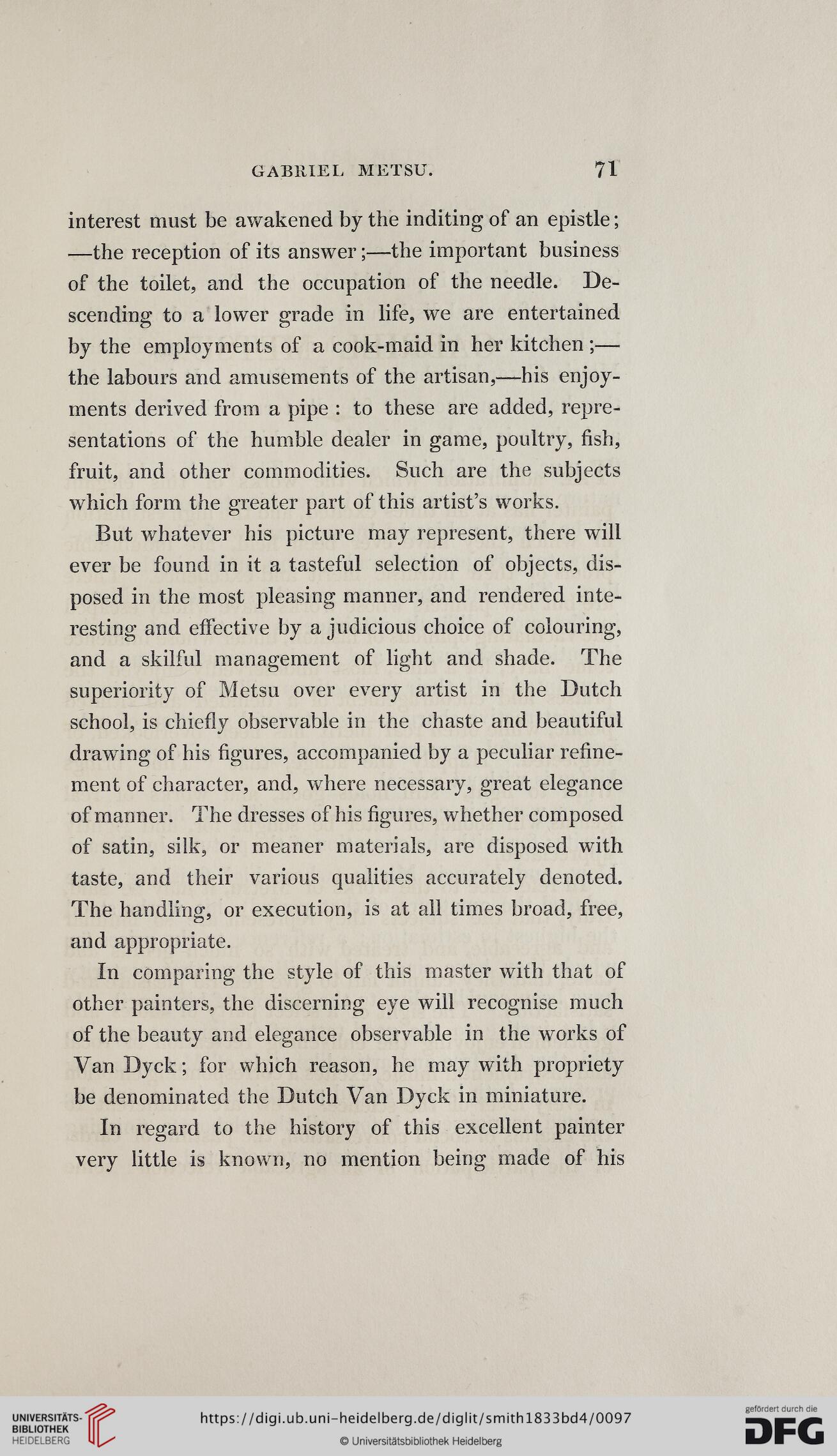GABRIEL METSU.
71
interest must be awakened by the inditing of an epistle;
—the reception of its answer;—the important business
of the toilet, and the occupation of the needle. De-
scending to a lower grade in life, we are entertained
by the employments of a cook-maid in her kitchen ;—
the labours and amusements of the artisan,—his enjoy-
ments derived from a pipe : to these are added, repre-
sentations of the humble dealer in game, poultry, fish,
fruit, and other commodities. Such are the subjects
which form the greater part of this artist’s works.
But whatever his picture may represent, there will
ever be found in it a tasteful selection of objects, dis-
posed in the most pleasing manner, and rendered inte-
resting and esfective by a judicious choice of colouring,
and a skilful management of light and shade. The
superiority of Metsu over every artist in the Dutch
school, is chiefly observable in the chaste and beautiful
drawing of his figures, accompanied by a peculiar refine-
ment of character, and, where necessary, great elegance
of manner. The dresses of his figures, whether composed
of satin, silk, or meaner materials, are disposed with
taste, and their various qualities accurately denoted.
The handling, or execution, is at all times broad, free,
and appropriate.
In comparing the style of this master with that of
other painters, the discerning eye will recognise much
of the beauty and elegance observable in the works of
Van Dyck; for which reason, he may with propriety
be denominated the Dutch Van Dyck in miniature.
In regard to the history of this excellent painter
very little is known, no mention being made of his
71
interest must be awakened by the inditing of an epistle;
—the reception of its answer;—the important business
of the toilet, and the occupation of the needle. De-
scending to a lower grade in life, we are entertained
by the employments of a cook-maid in her kitchen ;—
the labours and amusements of the artisan,—his enjoy-
ments derived from a pipe : to these are added, repre-
sentations of the humble dealer in game, poultry, fish,
fruit, and other commodities. Such are the subjects
which form the greater part of this artist’s works.
But whatever his picture may represent, there will
ever be found in it a tasteful selection of objects, dis-
posed in the most pleasing manner, and rendered inte-
resting and esfective by a judicious choice of colouring,
and a skilful management of light and shade. The
superiority of Metsu over every artist in the Dutch
school, is chiefly observable in the chaste and beautiful
drawing of his figures, accompanied by a peculiar refine-
ment of character, and, where necessary, great elegance
of manner. The dresses of his figures, whether composed
of satin, silk, or meaner materials, are disposed with
taste, and their various qualities accurately denoted.
The handling, or execution, is at all times broad, free,
and appropriate.
In comparing the style of this master with that of
other painters, the discerning eye will recognise much
of the beauty and elegance observable in the works of
Van Dyck; for which reason, he may with propriety
be denominated the Dutch Van Dyck in miniature.
In regard to the history of this excellent painter
very little is known, no mention being made of his




